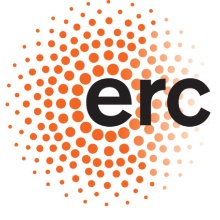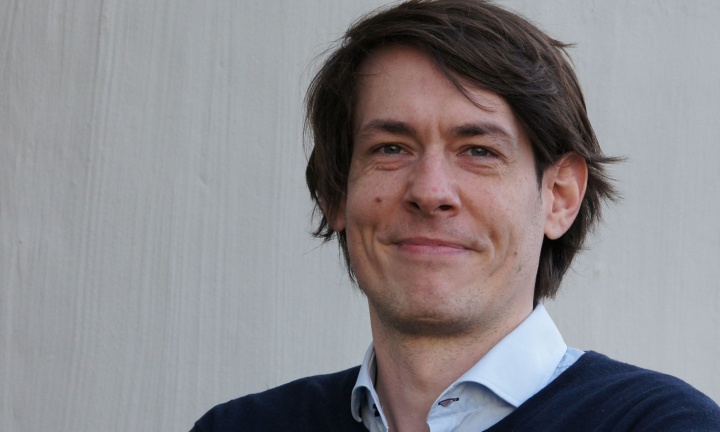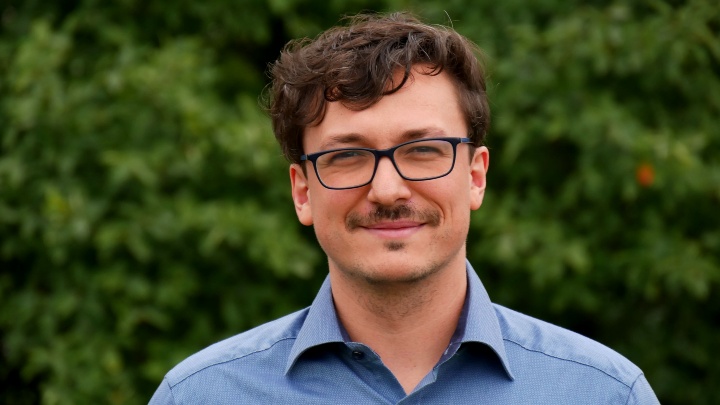The European Research Council (ERC) awarded Dr. Tim Langen from the Institute of Physics (5) and Dr. Marcel Pfeiffer from the Institute of Space Systems (IRS) at the University of Stuttgart one of the coveted ERC starting grants. The grants, each valued at EUR 1.5 million, are designed to support outstanding early career researchers in groundbreaking and visionary research. With the ERC Proof of Concept grant, Prof. Majid Hassanizadeh, a long-standing cooperation partner of the Department of Hydromechanics and Modeling of Hydrosystems as well as of the Collaborative Research Center (SFB) 1313, received a funding that has enabled past winners to take first steps towards technology transfer.
Prof. Wolfram Ressel, Rector of the University of Stuttgart, is very pleased and comments: “With its decision to award the grant, the European Research Council both honors the excellent credentials of early career researchers at the University of Stuttgart and underlines the reputation of our university as a place of internationally visible cutting-edge research. My sincere congratulations to all the grant winners.”
Tim Langen will use the ERC Starting Grant to investigate novel quantum mechanical superposition states of solid and superfluid, so-called supersolids. With his grant, Marcel Pfeiffer is going to research non-equilibrium effects in gas and plasma dynamics, a fundamental topic for understanding the physical processes in many applications and fields of industry.
ERC Starting Grant NEWMAT (Supersolids and beyond: Exploring new states of matter with laser-cooled dipolar molecules) – Dr. Tim Langen
In the microscopic world ruled by quantum mechanics, nature can behave in ways that are very different from our everyday experience. A particularly fascinating example is the superposition principle. Following this principle, atoms can be located in different places at the same time, and matter can behave both as a solid and as a liquid simultaneously. The latter case is the defining property of a supersolid, a recently discovered state of matter that combines the frictionless flow of a superfluid with the crystalline structure of a solid. Using his ERC Starting Grant, Dr. Tim Langen aims to study this exotic state of matter in unprecedented detail.
Whether such a supersolid can really exist had - until recently - been intensely debated for more than 60 years. Only in 2019, its very existence was finally proven by Langen and Tilman Pfau at the University of Stuttgart, and several other international teams, by experimentally studying the behavior of magnetic atoms at temperatures close to absolute zero. This first experimental proof initiated a completely new research field that now aims to understand the properties of supersolids in more detail.
However, the possibilities to do so using existing experimental approaches are very limited. In his ERC project, Langen will therefore establish a new experimental platform to study supersolids. Instead of magnetic atoms, he will be studying molecules in his experiments. As quantum objects, molecules are much more complex and can therefore provide completely novel insights into the properties of supersolids. Using high resolution imaging techniques, Langen plans to observe and control the relevant processes at the level of single molecules. „Until very recently the manipulation of molecules with this kind of precision was considered completely impossible. The ERC Starting Grant enables me to advance state-of-the-art laser cooling techniques to prepare the molecular supersolids for the first time,“ Langen explains. He expects his experimental approach to provide a precise comparison between theory and experiment, as well as unprecedented insights into the nature of these and other exotic new states of matter.
About Tim Langen:
Dr. Tim Langen studied physics in Mainz, Marseille, Paris, and Vienna. Already during his PhD studies, he made important contributions to experimental quantum physics and received several international awards for his work. Subsequently, he was awarded a fellowship of the Alexander von Humboldt Foundation to work at JILA (Boulder, USA). He has been leading a research group at the University of Stuttgart since 2017.
ERC Starting Grant MEDUSA (Multiscale Fluid and Plasma Dynamics using Particles), Dr. Marcel Pfeiffer
Non-equilibrium effects in gases and plasmas always occur when there are large local differences in ambient conditions, for example, when there are large temperature differences. Such effects are negligible for flows around a car or an airplane. However, if the differences become extreme, effects occur that cannot be described analytically, or only with great effort. This is the case, for example, under the conditions “very hot” and “very fast”, such as when a space capsule re-enters the Earth's atmosphere, or even with very small spatial dimensions, as in the micro- and nanofabrication of computer chips. Under these extreme conditions, many different components and parameters interact, making the simulations complex and only manageable on high-performance computers. This takes time and is expensive, which is why non-equilibrium effects are a problem especially in the industrial sector.
Against this background, the aim of the funded MEDUSA project is to develop stochastic, particle-based multi-scale methods for simulating gases and plasmas in thermochemical non-equilibrium. The aim is to raise the observation of the gas from the microscopic to the mesoscopic level, a middle range of visibility, which is located between the micro- and the macrocosm. “Our goal is to achieve the precision of microscopic observation with the speed of macroscopic observation,” explains Pfeiffer. This is an interdisciplinary project in which physics, mathematics, chemistry, and computational science need to be combined. The basis of the project is the open-source particle code “PICLas”, which is to be extended. It was developed in a long-term collaboration between the Institute of Space Systems and the Institute of Aerodynamics and Gas Dynamics (IAG) at the University of Stuttgart with the support of the High Performance Computing Center Stuttgart (HLRS). Meanwhile, “PICLas” is already being used by various industrial partners and is the basis of “boltzplatz”, a successful spin-off of the University of Stuttgart.
About Marcel Pfeiffer:
Dr. Marcel Pfeiffer studied physics in Jena. For his dissertation, he researched non-equilibrium effects in gases and plasmas within the topic of spaceflight. Since 2016, he has been a postdoc at the University of Stuttgart and Development Manager of the open-source code “PICLas”.
ERC-Proof of Concept for Prof. Majid Hassanizadeh
The ERC Proof of Concept for Prof. Majid Hassanizadeh is entitled “PrintMed - Printing Personalized Medicines on Demand“ and is based on research on flow processes in porous media, for which the scientist received an ERC Advanced Grant in 2013. Prof. Majid Hassanizadeh is a long-term cooperation partner at the Department of Hydromechanics and Modeling of Hydrosystems as well as an external partner and Mercator Fellow of the Collaborative Research Center (SFB) 1313. He is a professor emeritus of Utrecht University and an honorary doctor of the University of Stuttgart.
Expert Contact:
Dr. Tim Langen, University of Stuttgart, Physics 5, Phone +49-711-685-60149,
E-Mail t.langen@physik.uni-stuttgart.de
Dr. Marcel Pfeiffer, University of Stuttgart, Institute of Space Systems, Phone +49 (0)711/685 60335,
E-Mail: mpfeiffer@irs.uni-stuttgart.de
Prof. Majid Hassanizadeh c/o Prof. Rainer Helmig, University of Stuttgart, Institute for Modelling Hydraulic and Environmental Systems, Department of Hydromechanics and Modelling of Hydrosystems, Phone +49 711 685 64741,
E-Mail: rainer.helmig@iws.uni-stuttgart.de




